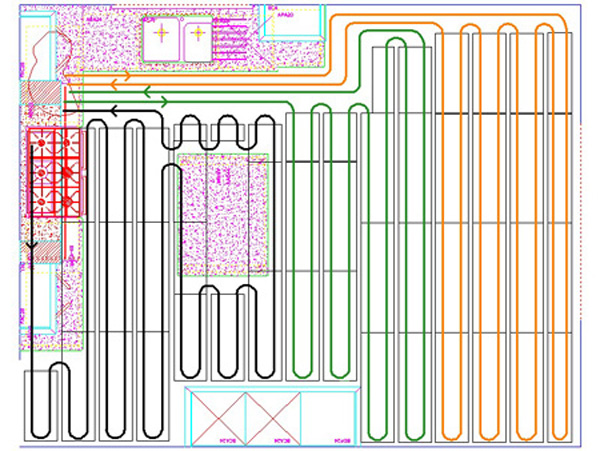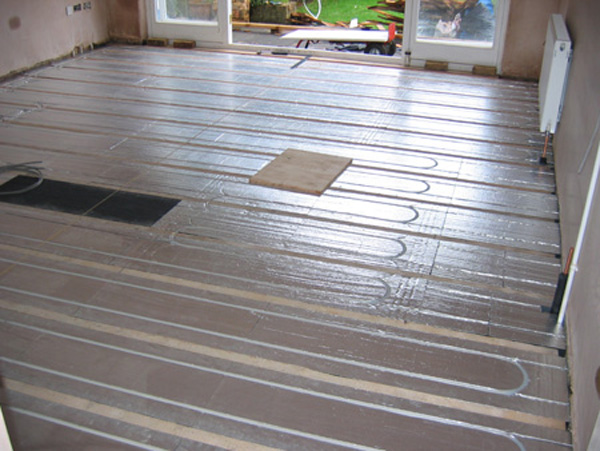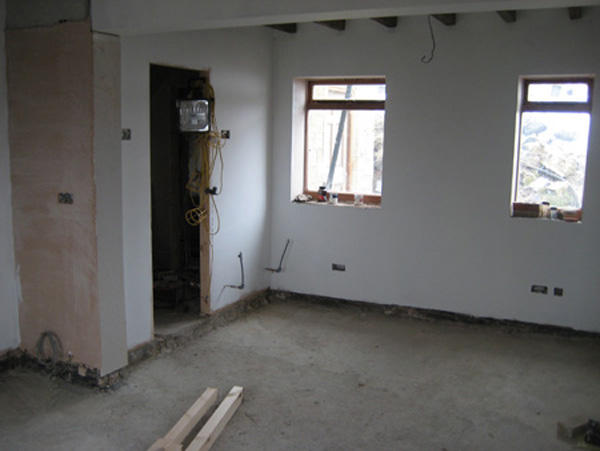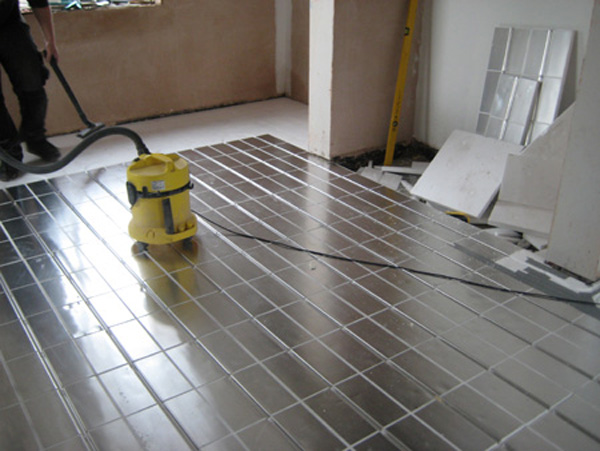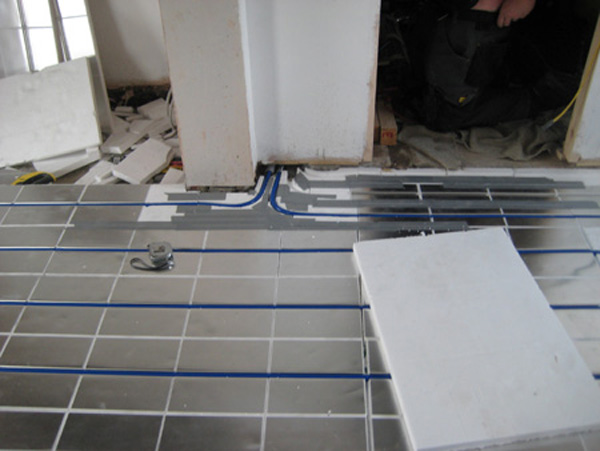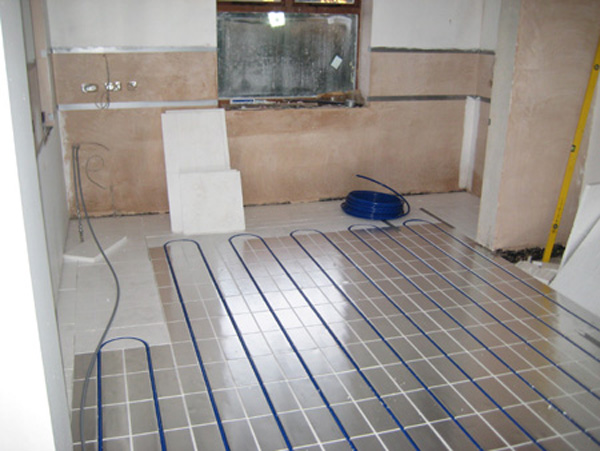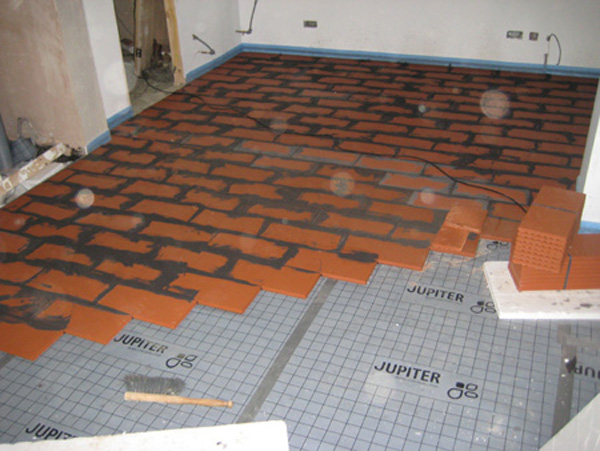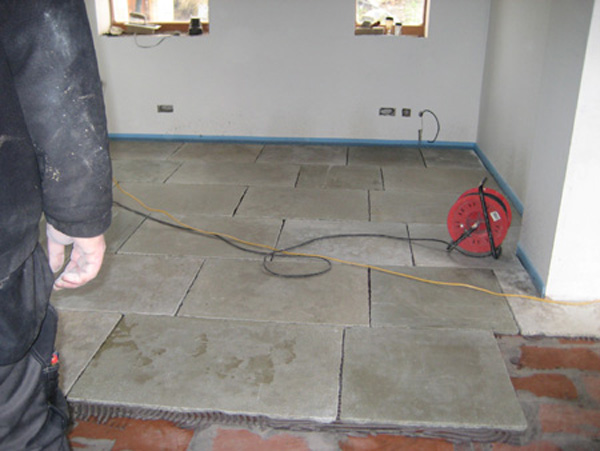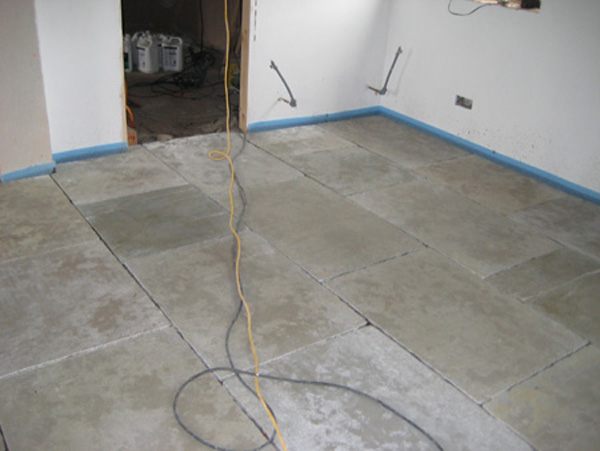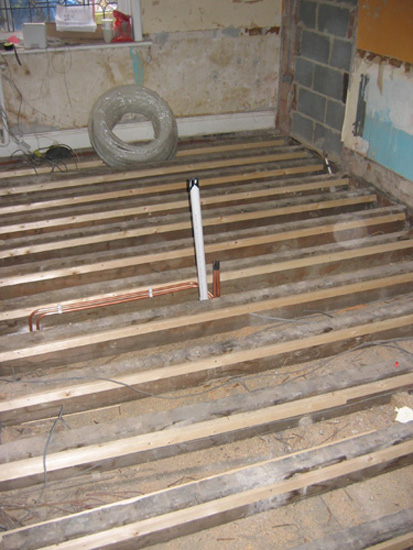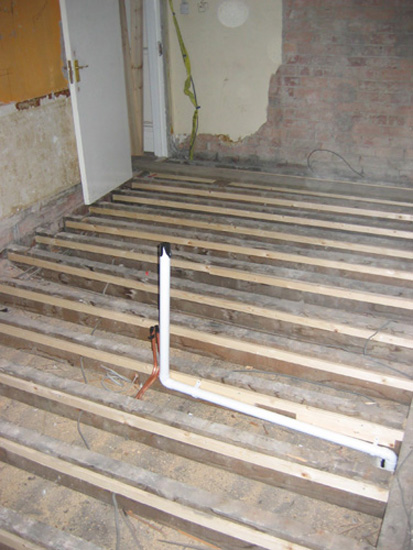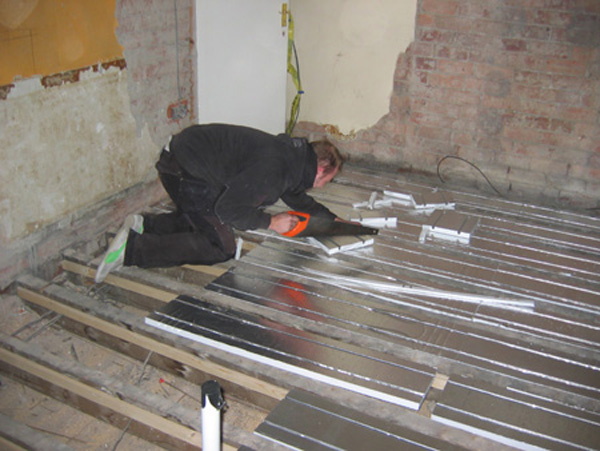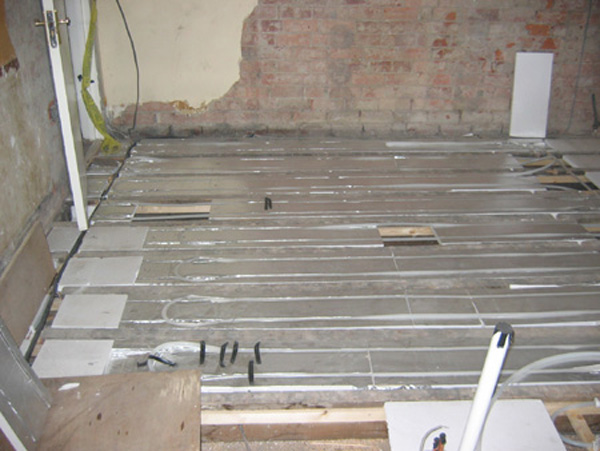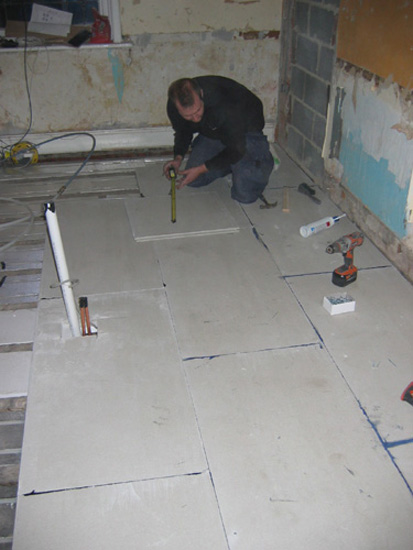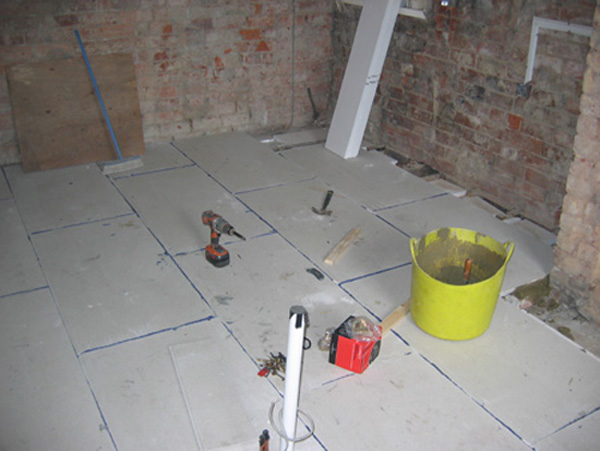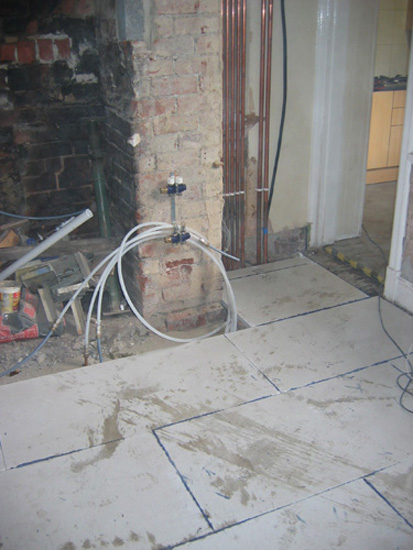
Design We offer a complete design, supply and installation service for underfloor heating, for new build, refurbishment and extension projects:
With modern condensing boilers and sophisticated controls, underfloor heating is the most efficient way to heat your home. Materials Underfloor heating is traditionally comprised of plastic PERT or PEX pipe cast in screed. Modern systems tend to use either expanded (EPS) or extruded (XPS) polystyrene panels with a high U-value gypsum/calcite board or ceramic tile as the structural floor. The performance of the floor as a heating element is determined principally by the floor covering: tiles or stone are poor insulators and so make very good finishes for UFH; carpet is a good insulator, and so makes for poor heating performance. Natural timber should not be used unless the supplier can guarantee its stability under such conditions, but high quality engineered floorboards can be used with low flow temperatures. Wood is in any case a reasonably good insulator, so will not provide optimum performance. EPS/XPS Panels, Boards and Tiles For new underfloor heating projects we recommend the use of foiled polystyrene panels and Knauf Brioboard. For floors that require extra weight bearing capabilities there is a ceramic tile option, the Screed Replacement Tile or SRT. This type of heated floor is extremely quick to respond, typically 1 hour to come up to temperature, in contrast to screed floors which take 3 to 4 hours. EPS/XPS panels and boards/tiles can be laid either between joists or over an existing base slab as a floating floor; we can supply a heated, insulated floor which is only 50mm thick, plus final floor finish. This type of system is extremely efficient as virtually no heat is lost downwards, and can be used on an uninsulated slab in refurbishment projects. We do not recommend the use of screed for underfloor heating. Screed systems, whether as a slab or between joists are inherently problematic in our climate because in spring and autumn it can be warm and sunny one minute and snowing the next. Screed when warm is a large thermal mass which is very slow to heat up and equally slow to cool down, so it cannot react quickly to changes outside. However, if screed is chosen, or if you already have a screed system and find that over/under heating is a problem, one solution to mitigate against this is to fit weather compensating controls with modulating flow temperatures. |
